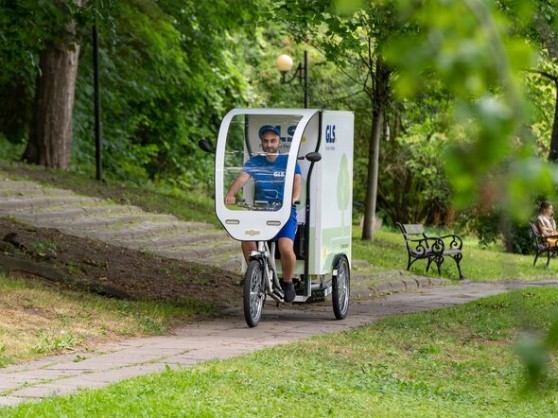GLS Group has been actively seeking and implementing ways to reduce our environmental impact, as have our local transport partners. The aims are to use resources as efficiently as possible and to optimise processes.
-
Vehicles
Conversion of the vehicle fleet
GLS is increasing fuel efficiency and reducing greenhouse gas emissions. All vehicles in the fleet – i.e. those used by our transport partners and the in-house fleet of company cars – are gradually being replaced with more eco-friendly models.
-
Transport planning
Transport planning
GLS uses state-of-the-art, IT-assisted planning instruments to improve operating processes and transport routes. Journey lengths are systematically minimised through optimised route planning.
-
Sites
Green construction
GLS builds in an eco-friendly way, with environmental aspects explicitly factored into new builds, replacement buildings and extension projects. The use of rainwater, photovoltaic technology, recyclable building materials and heat pumps plays a vital role.
We have a holistic approach to sustainability
People and the environment we all live in build the focus of our responsibility. We take this responsibility towards employees, the society and the environment very seriously. Therefore, we actively engage in fairness, education and a minimal impact on the environment.
By achieving these goals, we also contribute to the mobility and reliable availability of goods, which, in turn, constitute the backbone of the economy. Our goal is to attain sustainable commercial success whilst protecting the environment for future generations.
Our investments in sustainability
Depots and infrastructure
We explicitly consider ecological and social aspects in all new buildings, replacements and extensions. For environmentally friendly equipment, we invest on a broad scale in modern, environmentally friendly techniques. The use of rainwater, photovoltaics, recyclable building materials, heat pumps as well as efficient lighting technology and thermally insulated buildings play an important role.
Transitioning the vehicle fleet towards eMobility
We aim to gradually switch the entire fleet to zero-emission and low-emission vehicles – our transport partners’ fleet as well as our own company car fleet.
Moreover, we establish the necessary charging infrastructure in our depots for the continuous electric vehicles transition.
Local micro depots
In order to optimize transport processes in city logistics and to promote emission-free delivery in city centers, we are setting up micro depots. From here, emission-free e-vehicles go on delivery tours. This saves transport routes, reduces noise and thus protects people and the environment.
Minimizing transport routes
To improve operating processes and transport routes, we count on state-of-the-art, IT-assisted planning instruments. This is how we manage to systematically minimize our transport routes and thus to avoid greenhouse gas emissions.
Ensuring climate compensation
Our current climate protection projects in cooperation with ClimatePartner
What does climate compensation mean?
Climate-neutral are companies, processes and products whose greenhouse gas emissions have been calculated and offset by supporting internationally recognized climate protection projects. Offsetting greenhouse gas emissions is an important step in holistic climate protection, alongside avoidance and reduction.
Which climate projects does GLS support?
The emissions caused by parcel transport and business activities along our whole value chain are offset by certified climate protection projects in cooperation with our compensation partner ClimatePartner. Currently we support four VCS/CCBS- and Gold Standard-certified projects in South America and India.
Why does GLS support projects abroad?
Climate protection projects require four criteria: Additionality, no double counting, permanent savings and regular independent verification.
The criteria of additionality is not met for many projects in the EU because various funding programmes already cover the economic aspects of e.g. the expansion of renewable energies.
Double counting can only be avoided if it is ensured that the savings of greenhouse gas emissions achieved by a project are not already counted elsewhere. Savings achieved in the EU are usually directly accounted towards a country's national greenhouse gas balance and thus only contribute to achieving the climate targets of the respective country and the EU.




